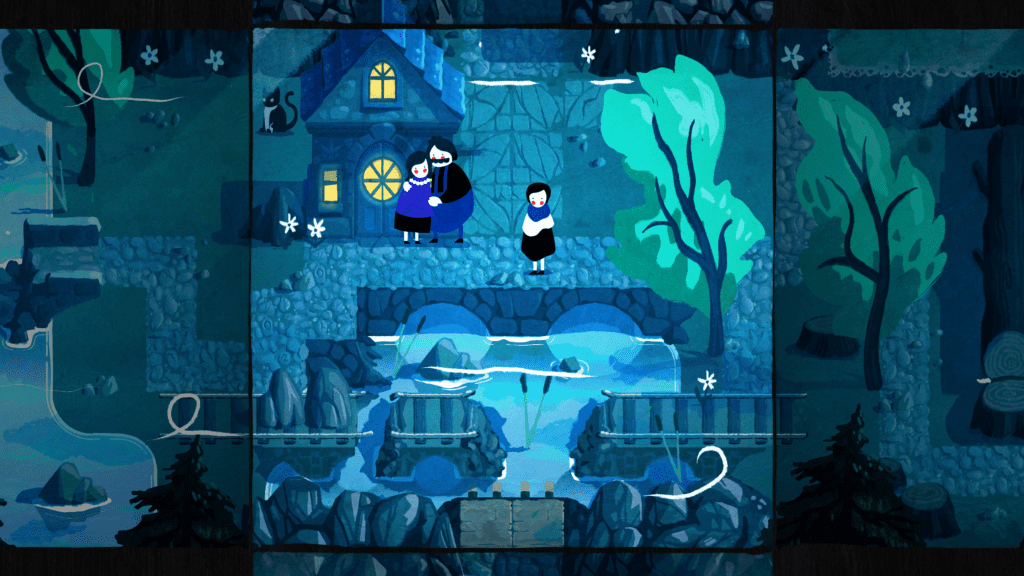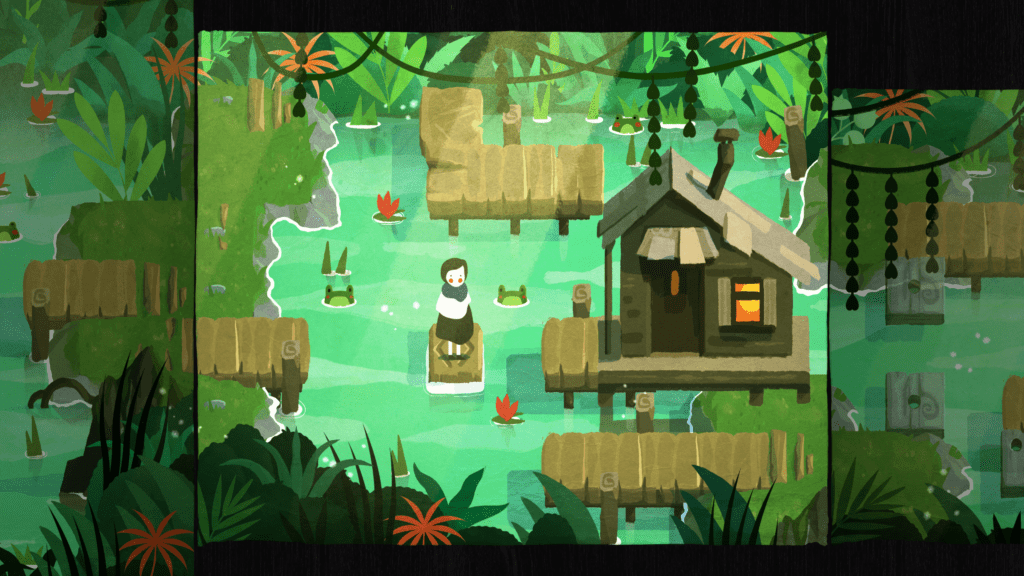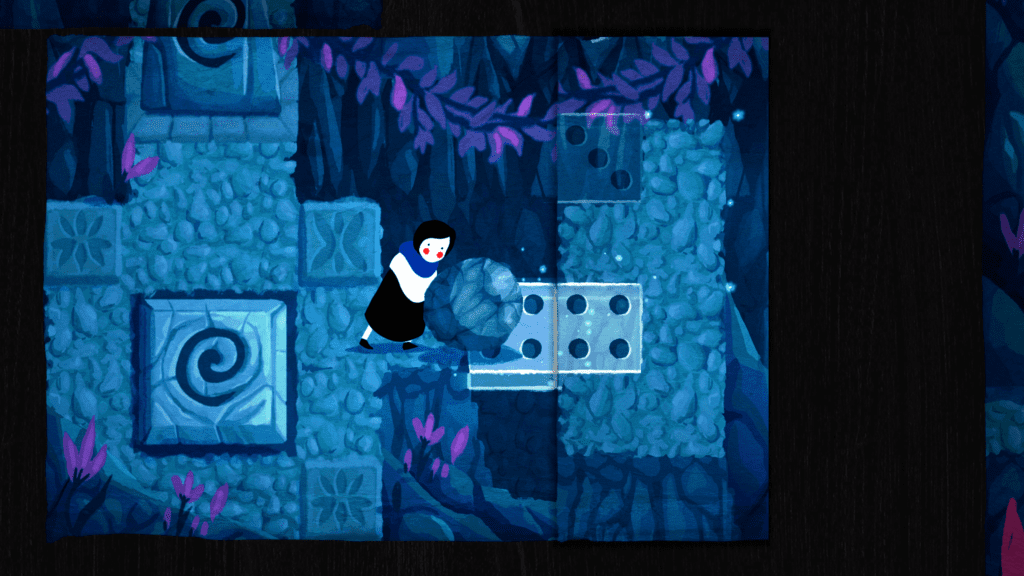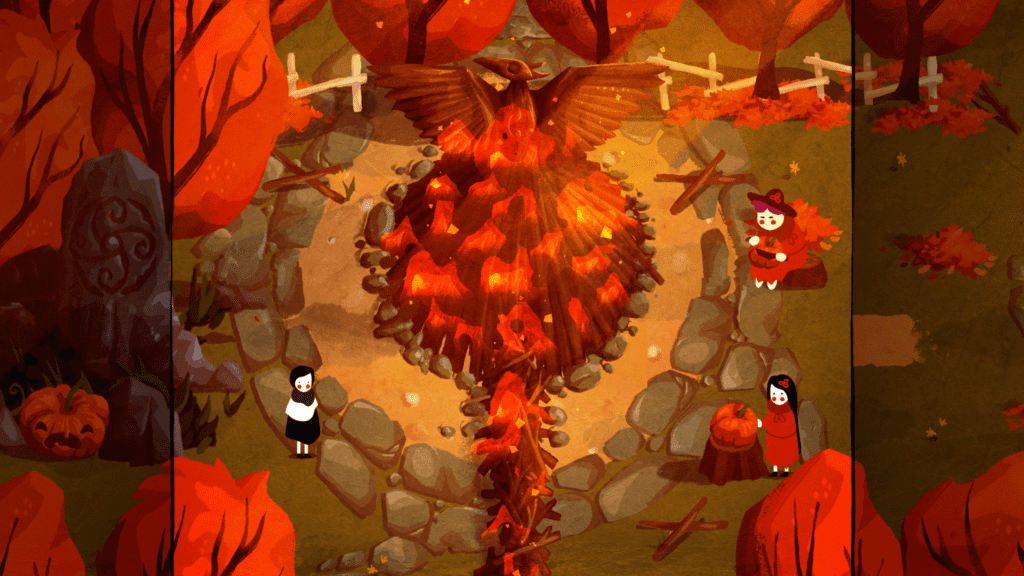Meet the Game Designer of Paper Trail
Paper Trail is a top-down puzzle adventure that follows the adventures of Paige, an astrophysicist in the making. We meet her as she leaves home and her worried parents to pursue her dream. Here, players fold the world like origami in order to solve a series of challenging and fun levels. This is a story about creating your own path, metaphorically and literally! Developed by Newfangled Games, this captivating title won Best Game at our first-ever Games Lab in 2023. We caught up with Henry Hoffmann, a BAFTA-winning game designer and founder of the studio, to learn more about Paper Trail’s unique gameplay mechanic, the origins of the plot and what’s next for this exciting indie studio.
ASFF: Could you tell us a bit about yourself and your journey as a Game Designer so far?
HH: I’ve been making games in some form since I was 9 years old! That was when we got our first family computer and I got a copy of this drag and drop game making tool called Klik & Play. After making hundreds of 2D games using that, I upgraded to Blender and made hundreds more 3D games! I then went to University to study videogame art and design, where I founded my first company and made the game Mush. We got a publishing deal with Microsoft, won a BAFTA, and had great fun – all before graduating University! Since then I’ve started a number of indie game studios and worked on games including QUBE, Mortar Melon, Hue and now my most recent game Paper Trail!
ASFF: Paper Trail follows the protagonist Paige, who, against the wishes of her parents, runs away from home to study astrophysics at university. How did you come up with the plot?
HH: Well, it went through many iterations as the idea for the game developed. Originally, we were thinking about what kinds of narrative could be informed by the mechanic, this idea of folding the world and instantly travelling between realms. The idea of being in two places at the same time, that was the seed for our earliest versions of the story. That led us down a bit of a dark path. We had a story about a girl whose parents were going through a divorce, whilst her grandma hides a growing illness – you try to fix both by being in two places at the same time, but ultimately fail to solve anything. This one explored hard lessons about prioritising yourself, understanding your limits and forgiving your inner child. Needless to say, that isn’t the direction we ended up taking.
We instead drew on some personal experiences around feeling trapped in our hometown, of longing for adventure and broader horizons, of being among the first of our peers to leave and about making peace with our pasts too. We were in a small town in Suffolk, dreaming of going to university and leaving home – itching to get out there and start experiencing life. Paige is much the same! In fact the town which Paige grows up in is called Southfold. A play on the seaside town Southwold in East Anglia, where we used to go on holiday as a family.

ASFF: There’s a unique gameplay mechanic that involves players folding paper to create new paths and solutions. Could you tell us more? For instance, how did you come up with the idea?
HH: Yeah! So the folding mechanic is what makes Paper Trail really unique. The world is set out on these individual pieces of paper with levels on the fronts and the backs of the papers. What’s cool is that you can fold these papers, effectively merging the two levels where the front and back meet. You can then seamlessly pass through this rift where you’ve folded paper, as if you’ve also folded space and time itself.
We can’t remember which of us came up with the idea initially, but we were sketching out puzzle ideas on paper and using both sides. When one of us tried folding the paper over for more space, we noticed the two puzzles overlapped on top of each other and said “hang on, maybe there’s a mechanic here!” We carried on investigating and drawing maps on both sides of the paper and, before we knew it, we had an idea for the game!
ASFF: Looking at the game as a whole, which aspects have changed the most and which have changed the least since your initial ideas?
HH: Narrative has definitely evolved massively from the very early phases, but so has scope in pretty much every sense. When we started out, this was going to be a fairly short affair: wrapped up in a year or so and home in time for tea! That was the plan anyway; but as more people put their trust in us in the form of funding, we got increasingly ambitious with what we could achieve. So we went from just three characters to a full cast of five times that, fully voiced cutscenes, a whole interactive storybook narrative, a full original soundtrack and more mechanics than you could shake a stick at! None of those things seemed realistic when we first started out, but now they’re all included – it’s quite surreal to see. At the core, the paper folding – the main hook, has remained; and informed everything else. It’s all the other things we were able to build on top of that foundation that’s been so surprising!

ASFF: You’ve mentioned in other interviews that you’re most inspired by “mechanic driven design.” What got you interested in this aspect of games? What are some of your favourite mechanics that you’ve come across?
HH: Yes absolutely! I think it was the indie boom around the early 2010s where we saw the likes of Braid and Fez explode in popularity. You can definitely see the inspirations of that era in my previous game Hue. What excites me particularly about videogames compared to other mediums is the interactive nature of it, and how that interactivity can create wholly new experiences that were previously unimaginable. It feels like there’s still so much more to explore in terms of game mechanics, and the idea of creating something genuinely new and original is super exciting.
In terms of favourite game mechanics, I’d say Viewfinder and Superliminal are up there. Both amazing, mind-bending first-person puzzle games, where I remember thinking, “Dammit, why didn’t I think of that!”. Another game I love is Superhot, just because that’s an example of amazing mechanic-driven design for an (arguably) non-puzzle game. Also anyone thinking about making a first-person mechanic-driven game, I recommend checking out Narbacular Drop – it won the student IGF prize in 2006, and was the prelude to Portal. That was peak mechanic innovation for the time. Some slightly older 2D examples would be Closure and The Swapper. Again both amazing mechanic ideas, that were big inspirations when devising Hue.
ASFF: This is a puzzle game, but the atmosphere is very calming and cosy. What design decisions have you made to offer players guidance without taking away the challenge?
HH: I think, first of all, it was important to create a space where players don’t feel pressured: with no threat of failure, or reset, or death – like there often is in more hardcore games. By using music and art to create a meditative environment, we hoped to allow players the peace to solve puzzles in their own time.
On top of that, there were lots and lots of design decisions to help signpost solutions – and in times of confusion offer direct tangible hints. The domino blocks were a good example of this, essentially connecting two blocks of the same number would ‘activate’ them – allowing you to walk over them. This meant that players could look for the corresponding number they needed, and use that as a guide for which corners to fold next.
Another thing we added, which sounds very rudimental – was the ability to see the reverse side! Without that, all puzzle solving is reduced to guesswork – but by being able to peer through to the other side, you can instead plan your moves out in advance, much more satisfying!
Finally, for when you’re really stuck, we created a bespoke hint system. This brings up an outline of the paper, which displays the sequence of folds needed to solve the puzzle. It doesn’t show you where Paige or the other objects need to position themselves in between the folds though, so you still have to do a little thinking!

ASFF: Beyond the initial tutorial, players are given free rein to come up with their own solutions for each level. Could you tell us about solutions that have stuck out to you the most?
HH: There was one skip in an early level in the cave environment that somehow went unnoticed for over a year! We had a whole complicated puzzle about repositioning a boulder across an impossible bridge, that was actually quite tricky to solve. We didn’t spot, however, that by folding the top down it created a path all the way across the entire puzzle and straight out the other side. Our jaws dropped when a playtester just skipped the entire thing without even realising there was meant to be a challenge there.
ASFF: The music is so soothing! What considerations did you make when it came to the soundscape, such as music and foley sounds?
HH: Something we wanted to be very satisfying from the beginning, was a kind of ASMR approach to the paper folding. We wanted the crinkling paper sound to react to the velocity and position of the folds, similar to those videos of people crackling crisp wrappers right into the mic. The whole world really felt like it started coming to life with the addition of music and foley. Claudie, our composer, has been a delight to work with: we sent her quite esoteric descriptions of all the environments and she did a stellar job of converting those odd descriptions into beautiful music. I think a favourite audio moment for me, is when you enter the caves for the first time, and it’s all quiet and still. You hear the occasional echoing drop of water and Claudie’s ethereal voice comes drifting out of the cavern towards you, the sound of the wind muted by the layers of rock. Magical stuff!

ASFF: Paper Trail has been more than 4 years in the making so it’s really exciting that it’s coming out so soon! What are you most looking forward to sharing with audiences?
HH: Honestly, I’m most looking forward to those ‘aha!’ moments when people work out the solution to a puzzle. As a designer, that’s where the satisfaction is. Seeing peoples eyes light up when they realise the solution, where they suddenly feel like a genius – only to have it all taken away from them by the next (harder) puzzle!
ASFF: What’s next for Newfangled Games?
HH: We’re already exploring new content ideas for Paper Trail and we’ve just received the UK Games Fund Content Grant so we’re ready to start work on our next gently mind-bending adventure! We can’t say too much about that at this time – so watch this space! In the meantime, Paper Trail will be launching on all platforms on the 21st of May: happy folding!
Submit Your Game to be Part of #GamesLab2024!
The post Meet the Game Designer of Paper Trail first appeared on Aesthetica Short Film Festival.
10